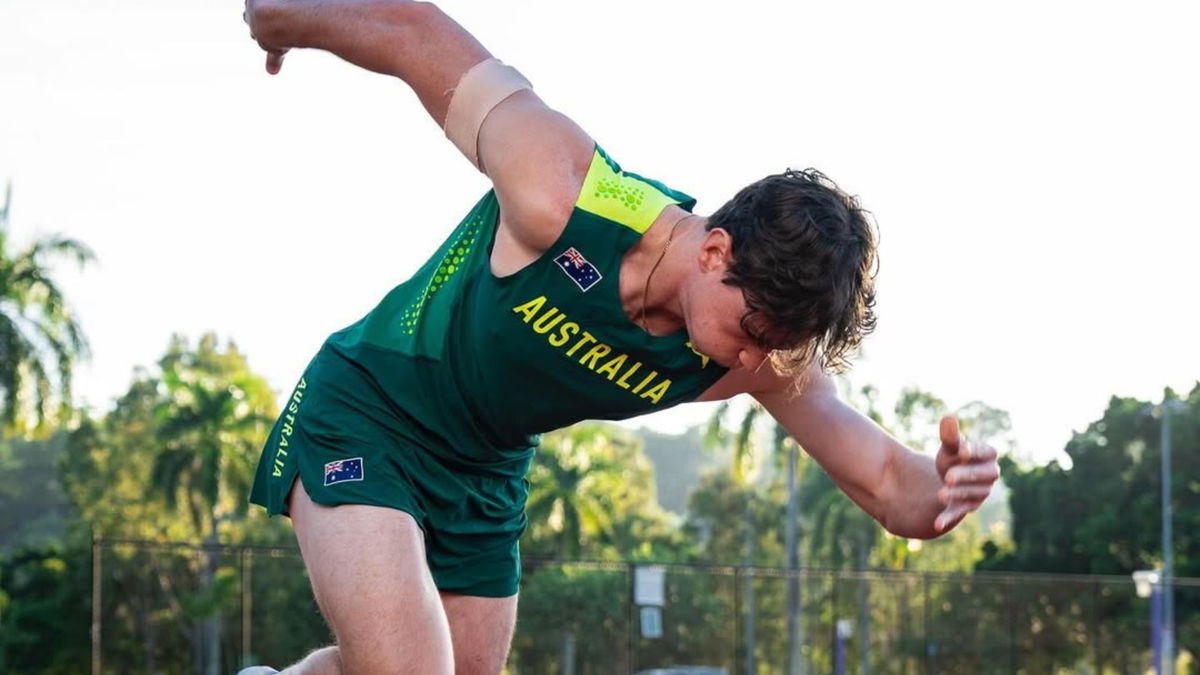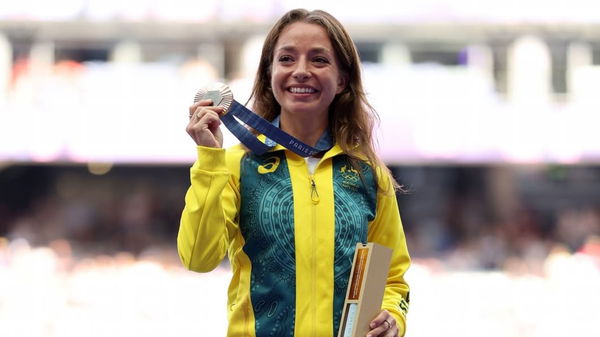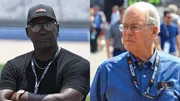
Imago
Image Credits: Instagram/@_lachiekennedy_

Imago
Image Credits: Instagram/@_lachiekennedy_
Australia’s sprinting program entered 2025 with a jolt of optimism. In March, the nation’s fastest man surged to a silver medal in the 60 meters at the World Indoor Championships, becoming the first Australian in history to step onto the podium in the event. His acceleration over the final 10 meters in Nanjing gave the impression that a new era of Australian sprinting was about to unfold, especially with the outdoor season and the world championships in Tokyo looming. But now, a dark cloud has eclipsed Australia’s winning hopes.
Watch What’s Trending Now!
Lachlan Kennedy had been shaping up as a rival on the global stage for names such as Noah Lyles and Kishane Thompson. The 21-year-old Queenslander became a central figure in Australia’s sprinting rise after clocking 6.43 seconds in Canberra to set an Oceania record and move into the world’s all-time top ten at 60 meters. His outdoor season confirmed his potential when he became only the second Australian ever to legally break the ten-second barrier in the 100 meters, running 9.98 in Nairobi, while also featuring in the 4x100m relay squad that lowered the national record to 37.87 seconds.
But that momentum has now been halted. Kennedy confirmed this week that a stress fracture in his back will prevent him from racing at the world championships in Tokyo next month. He wrote, “It’s with a heavy heart I have to announce that I will not be competing at this year’s world championships in Tokyo due to a progressing injury. Grateful for the year and the support I’ve received. I wouldn’t change a thing. I’ll use this time to heal, grow and come back stronger than ever.” The withdrawal ends what had been building toward a much-anticipated debut on the global championship stage in the 100 meters, an event where Australia has rarely had a genuine contender.
ADVERTISEMENT
Kennedy’s manager, Nic Bideau, explained that the decision was less about the possibility of appearing on the start line and more about the quality of performance. “It hasn’t healed as quickly as he wanted it to,” Bideau told Wide World of Sports. “He just had to take the time to make the decision. He knew he could run. It’s only a 10-second race; it’s not like he has to run a marathon. But he’s just not done the work to feel like he can run at his best, and he’s not interested in competing half-baked.” Bideau added that Kennedy’s long-term future takes priority, with three demanding seasons ahead culminating in the 2028 Los Angeles Olympics.
Lachlan Kennedy 🇦🇺 is OUT of the Tokyo 2025 World Championships due to injury! ❌️
The 21-year-old, who is one of Australia’s breakout stars of 2025, won 60m Silver at the World Indoor Championships in March. He holds the Oceania Record in 6.43s.
He has a 100m PB of 9.98s over… pic.twitter.com/qE27YCbeNK
— Track & Field Gazette (@TrackGazette) August 26, 2025
In Lachlan Kennedy’s absence, the selectors have turned back to Rohan Browning, who edged Kennedy by five-thousandths of a second to claim the national 100m title in April by a photo finish. Browning, whose best time is 10.01, last competed at this level at the Tokyo 2021 Olympics, where he reached the semifinals. “Out Kennedy, in Browning — he’s a pretty good replacement,” Bideau remarked, noting that the relay squad in particular benefits from Browning’s return. The 27-year-old has battled through injury setbacks but proved his competitiveness by securing his third national crown earlier this year.
ADVERTISEMENT
While Lachlan Kennedy’s absence removes one of Australia’s most compelling storylines, attention will also fall on 17-year-old Gout Gout, who has been named to the senior team for Tokyo. He will contest the 200 meters, adding intrigue to the sprinting program that continues to build depth unseen in previous generations.
For Australian supporters, Kennedy’s withdrawal is a disappointment; yet, the emergence of multiple young talents signals that the nation’s sprinting fortunes may not rest solely on one athlete.
ADVERTISEMENT
Meanwhile, another athlete’s decision to undergo hamstring surgery, coupled with Lachlan Kennedy’s withdrawal, delivered a double setback to Australia’s medal prospects for the Tokyo World Championships.
Australia’s world title hopes rocked as Jemima Montag too ruled out through injury following Lachie Kennedy’s setback
Australia’s preparations for the upcoming World Athletics Championships had been struck by a bitter setback when Jemima Montag confirmed she would undergo surgery on a hamstring injury, eliminating her from contention. For a competitor who had assembled medals of every shade at the highest levels, the timing of her withdrawal proved particularly cruel, as she had been shaping as one of the nation’s brightest hopes for gold in Tokyo.
ADVERTISEMENT

Imago
Image Credits: Instagram/@jemimamontag
Montag herself gave a candid account of the dilemma, explaining how the recurrence of her tendon problem forced an immediate medical decision.
“Knowing at that point we would only have five or six weeks until Tokyo and that this hamstring tendon injury has the propensity to recur, ultimately the medical team decided it was best to fly home, get it operated on and prioritize the longer-term vision,” she stated. Her reflections revealed the anguish of an athlete conscious of opportunity slipping away, adding, “It’s such a heart-sinking moment because I’d felt it before [at a training camp in June].”
ADVERTISEMENT
The blow to national aspirations was compounded by Montag’s honesty about the emotional strain of her interrupted campaign. “You’ve been hoping and praying throughout the rehab that you’ve got enough time, that you’re simultaneously taking things slowly enough but also progressing quickly enough that you’ll be good for the world championships when it matters,” she noted. Yet, the second surge of sharp discomfort confirmed otherwise.
Top Stories
Forced to Leave FOX, Cowboys Legend Troy Aikman Says ESPN Is Like ‘U.S. Government’ & Clearly Distinguishes the Two Networks

Who Is Paige Shiver? All About Michigan Football Staffer & Daughter of Veteran Bears Scout Jeff Shiver

FOX Issues Strict Ban on Terry Bradshaw But NFL Legend Defies It to Join Popular Morning Show

Michael Jordan Brings NASCAR to Its Knees as Jim France’s Courtroom Collapse Triggers Settlement

What Happened to T.J. Watt? Why Is He Hospitalized? Steelers Announce Latest News on LB Before Dolphins Game

LIV Golf to Cut Ties With Veteran Pro After His PGA Tour Return Intentions Became Public

Together with Kennedy’s separate withdrawal, her enforced absence reduced Australia’s medal calculations and cast a different complexion on the team to be finalized for Tokyo.
ADVERTISEMENT
ADVERTISEMENT
ADVERTISEMENT

